Flamingo feeding habits
I thought I would write a diary post moving away from breeding for a change and instead talk about a flamingo's behavioural ecology. Behavioural ecology is our understanding of why animals are evolved to do specific things, and how the specific things that they do allow them to "fit" nicely into their chosen habitats. Flamingos are well-known for having lots of specific adaptations for the environment that they live in, but some of their behaviour patterns still remain poorly understood. There is some new research out of the University of Leicester this year that focusses on the foraging and feeding behaviour of wild lesser flamingos in East Africa, and it has shed some interesting light on what this species does with its day.
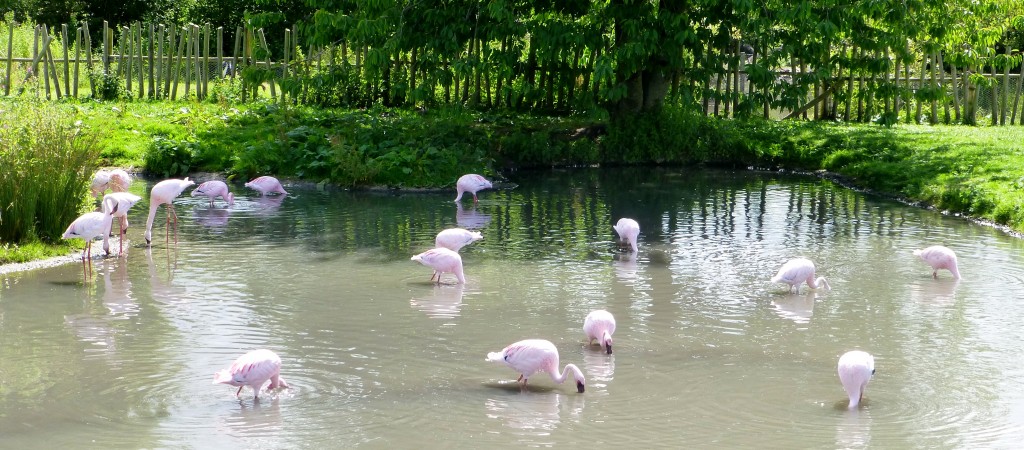
Firstly, why am I talking about foraging and feeding. Are these not the same thing? In the land of "posh science", not quite. Foraging is the act of looking or searching for food. Imagine a hungry teenager eyeballing what can be had from the fridge when nobody's looking. Feeding is where the food that has been searched for and located, is actually eaten. Maybe said teenager polishing off half of the fridge's contents before angry parent arrives. So flamingos, whilst not having fridges nor angry parents, have different ways of locating food and collecting food.
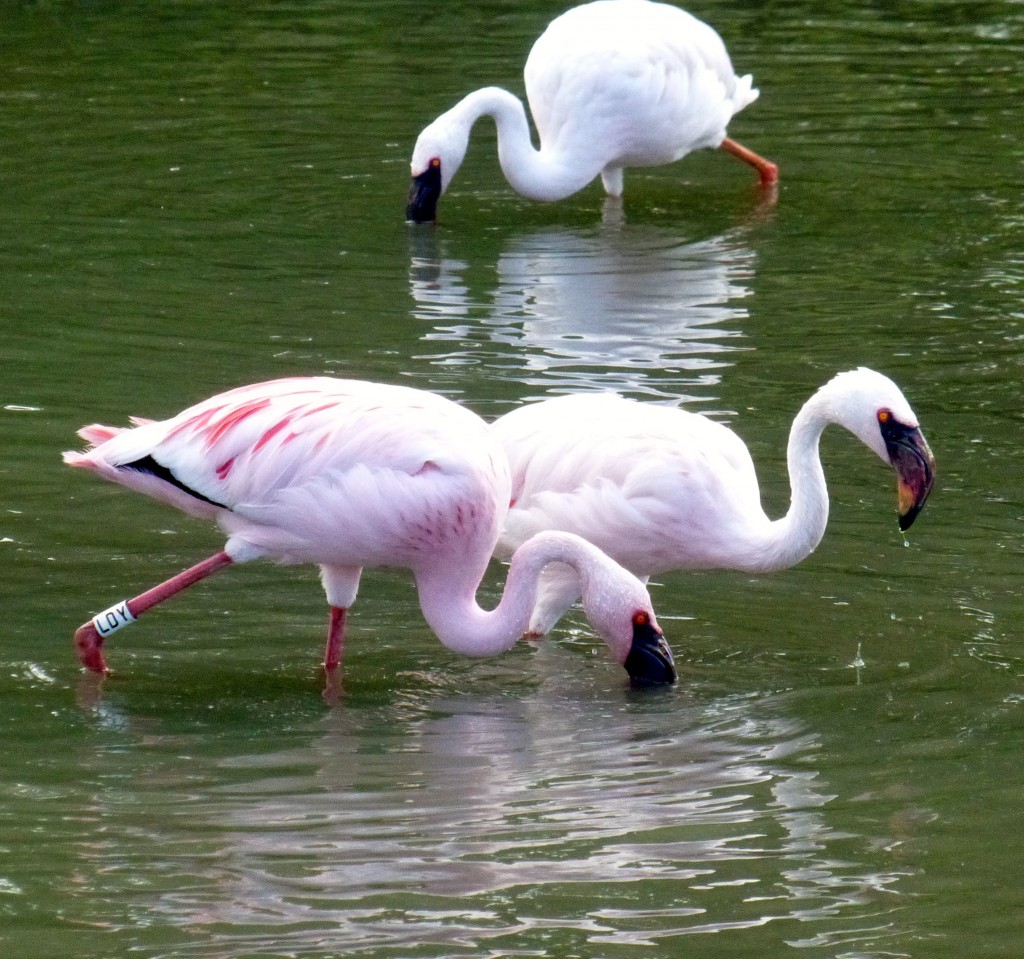
It has been assumed that lesser flamingos prefer to feed at the top water column, the top 5cm to be precise, because this is how their bills are adapted. And whilst they will feed near the bottom of the water that they are wading in, they don't like to do this a regularly as their sieving feeding behaviour, nor do they do this as often as other species of flamingo.
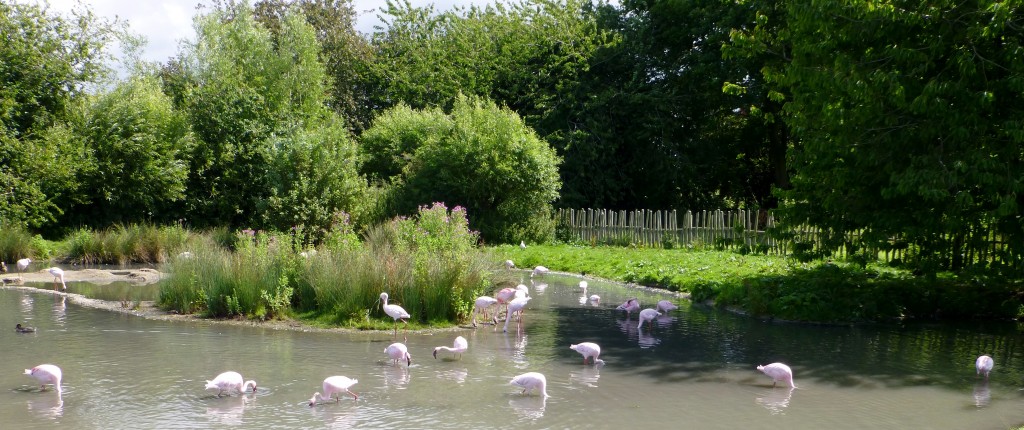
This new research identifies ten different feeding behaviours that are used by lesser flamingos to collect their food, and it also shows that the blue-green algae (which is their specific favourite food) is not only collected by the flamingos near the water's surface but that they will also go grubbing around for it at the bottom of whatever pool they are in too.
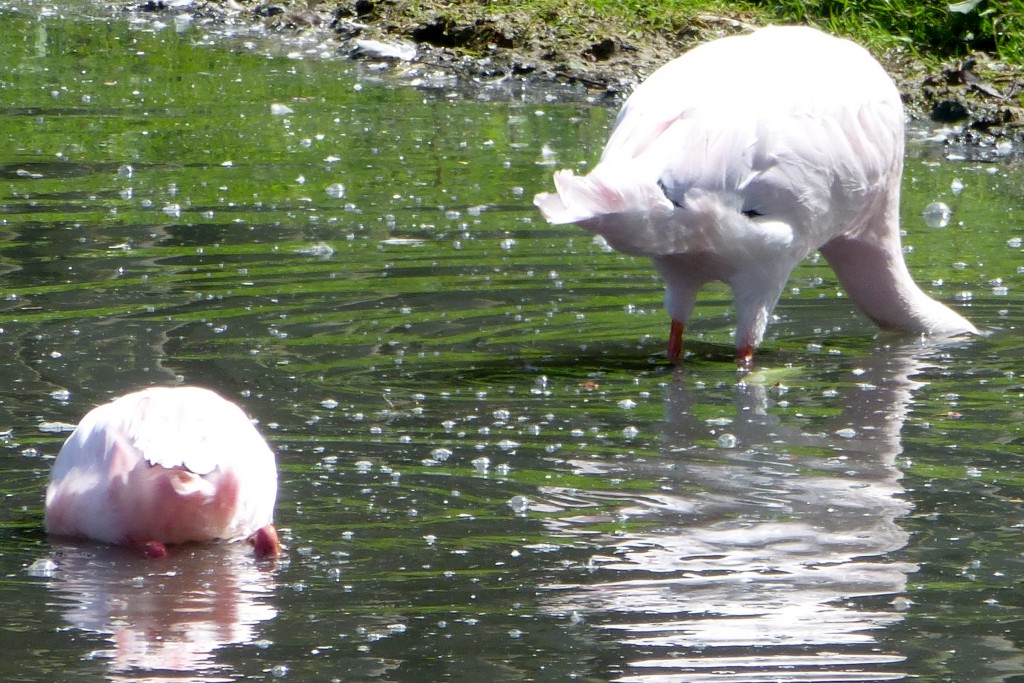
From a captive animal point of view, what is most interesting about this study on wild birds is that it has shown how important swimming water is to flamingos; and that lesser flamingos will prefer to collect their food whilst swimming if they are looking for a particular type of algae AND if the weather condition is of a particular type. So flamingos, whilst having incredibly specialised beaks to collect their food, also have very specialised feeding behaviours that they can change to suit different types of environment.
https://www.youtube.com/watch?v=qCpZv8ot5_g
The clip above shows the WWT Slimbridge lesser flamingos foraging in their enclosure. You can see that some birds are sieving the water, some are feeding from the bottom of their pool and some are swimming. So the avics at Slimbridge have managed to create a perfect home-from-home for these birds, which allows them to perform many of the natural foraging behaviours that they would in the wild. Who needs to go all the way to the Rift Valley to watch lesser flamingos do what they do when you can stay closer to home ;-) Well, I suppose the Rift Valley does have the better weather...
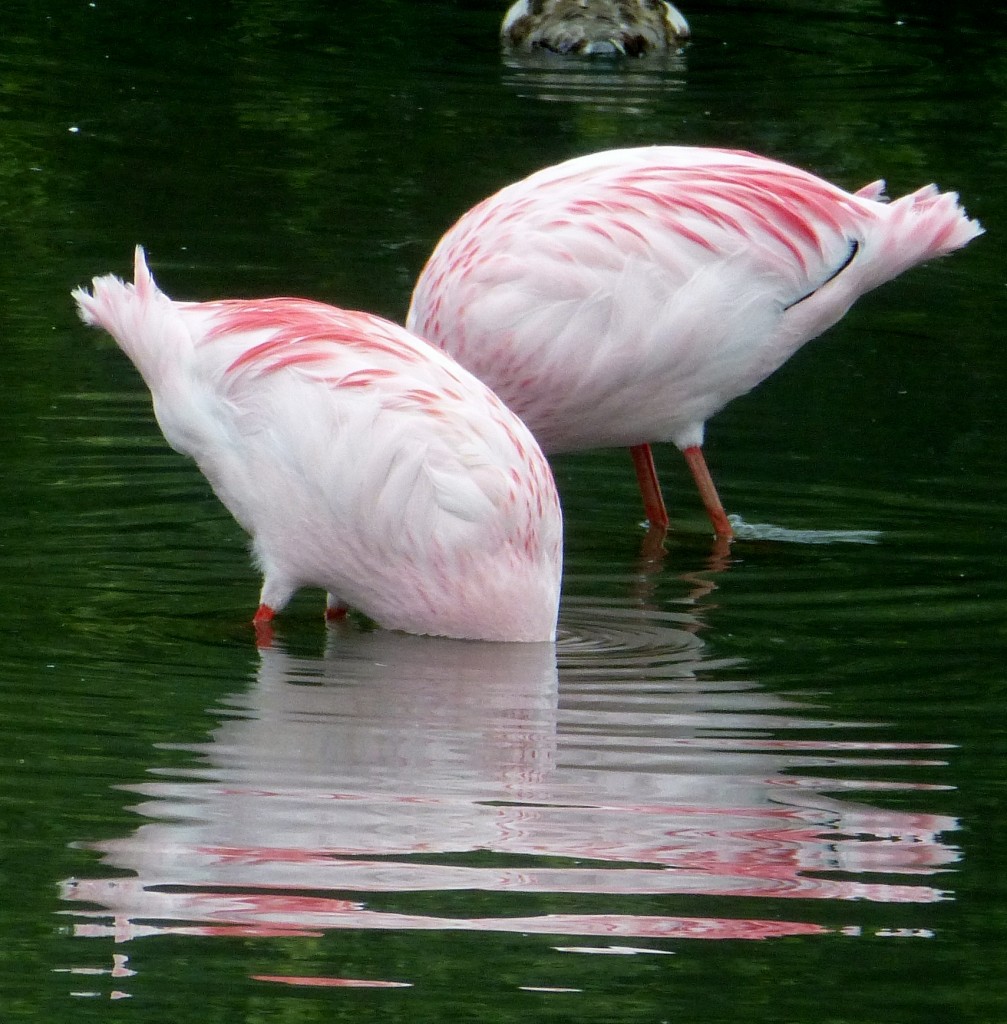
There is a reason why scientists thought that lesser flamingos would do more sieving and less grubbing for their dinner. As herbivores, whose diet is pretty much all algae, it was assumed that lesser flamingos would collect the most algae at the surface where there is more sunlight. Those less specialist flamingos that eat animals as well as plants, so species such as the greater flamingo, would be more likely to feed near the bottom of a lake to collect a wider range of food. By taking mud samples from the lake beds where lesser flamingos feed, scientists have identified that the algae that these birds like to eat is found their too; so this smallest of flamingos will also stick its head underwater to collect its dinner.
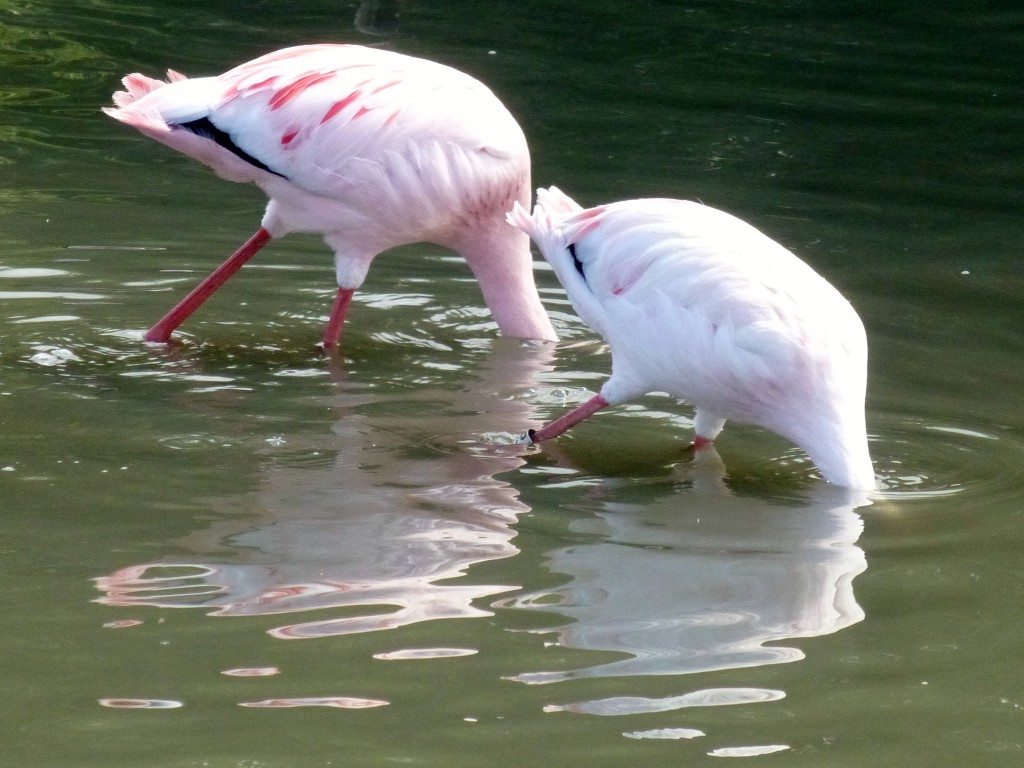
I will leave you with this short video clip, of the flock spread out across the front of their pen. They always look so happy and contented when they do this and I love to watch how close they will come over to where visitors are standing. It really shows how well the birds are provided for at Slimbridge, and how they can show visitors the types of things that their wild cousins are also doing. Hopefully this has given you a taste of the on-going science into flamingo behaviour and how we still have a lot to learn about these remarkable pink birds.
https://www.youtube.com/watch?v=CTb77yfpsg8



